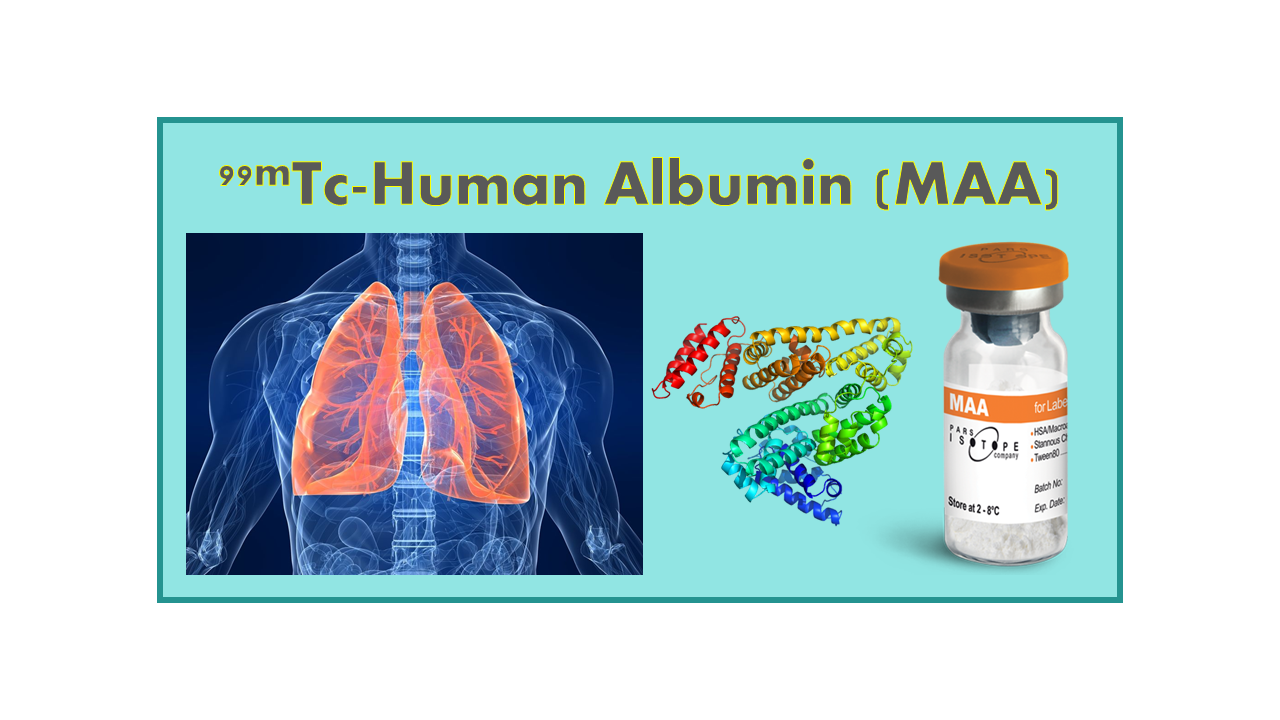
99mTc-Human Albumin (Macroaggregate)
April 6, 2024
99mTc-Human Albumin in macroaggregate form is a radiopharmaceutical used for lung perfusion imaging. It consists of technetium-99m (99mTc) labeled to human albumin, a protein found in the blood. When injected into the bloodstream, the macroaggregated form of this radiotracer is large enough to get trapped in the capillaries of the lungs, allowing for the visualization of lung perfusion using a gamma camera.
Lung perfusion imaging with 99mTc-Human Albumin macroaggregates is a common diagnostic tool for evaluating pulmonary embolism, pulmonary hypertension, and other lung conditions. The distribution of the radiotracer in the lungs can help identify areas of decreased or absent blood flow, which may indicate blockages or abnormalities in the pulmonary vasculature.
This imaging technique is non-invasive and provides valuable information about lung function and blood flow, aiding in the diagnosis and management of various respiratory disorders. The use of 99mTc-Human Albumin macroaggregates has been well-established in nuclear medicine and is considered safe and effective for lung perfusion studies.
Description
99mTc-Human Albumin (HSA, Human Serum Albumin) in macroaggregate form is a generic radiolabeled lung perfusion imaging agent. Albumin macroaggregates are particles with a size between 10 and 100 µm made of human albumin that is easily labeled with 99mTc. A 5 mCi dose usually contains on average 500,000 particles. The biological half-life of macroaggregates in the lungs is about 6 to 8 hours. The arterioles are only temporarily occluded because the material degrades into smaller particles which are eventually phagocytized by cells of the reticuloendothelial system.
Clinical applications
The 99mTc-labeled HSA macroaggregates are used in lung perfusion scintigraphy, as an adjunct in the diagnostic of pulmonary embolism, chronic circulatory failure, and lung diseases including emphysema, inflammation or tumor. Dose per patient is around 4 to 6 mCi.
Availability
Several companies are producing these tracers for different applications under various names: BRIT (TCK-56), DiaMed (Macrotech, Russian MA 2000), Fuji Film (Techne® MAA), IBA Molecular (Curium) (Pulmocis), IDB/AAA (Macrosalb), Mallinckrodt (Curium) (Technescan Lyomaa US MA 1976), Medi-Radiopharma (Macro-Albumon / Tc-MR2), Pars Isotope (MAA), ROTOP Pharmaka GmbH (HAS Microspheres), Wuxi Jiangyuan.
Brand names of discontinued products include: A-N Stannous Aggregated Albumin (Syncor), Albumin kit and Maasol (GE Healthcare – Medi Physics, US MA 1977), Instant Microspheres (3M), Lungaggregate (GE Healthcare, US MA 1976), Macrolite (Pharmalucence – US MA obtained in 1983) and Pulmolite (Pharmalucence – US MA obtained in 1976, discontinued in 2011), Macrotec (Bracco, US MA 1976), Tc-99m-MA (Draximage US MA obtained in 1987), Technescan MAA (Mallinckrodt, marketed in EU in 2000).
In fact, in the US, Jubilant Draximage was the only company offering this tracer. Draximage faced during 2013 and beginning of 2014 serious manufacturing issues which led to shortages. Eventually Draximage solved the issues but in May 2014 announced a one-time price increase (US$ 560 per vial up from US$ 26 – product price aligned with the 133Xe price) to compensate money losses but also the investment in a new manufacturing process. In March 2020, Curium announced that their kit for the preparation of 99mTc albumin aggregated injection was again available in the US under the name Pulmotech MAA.
The potential US market size for MAAs lies above 600,000 patients/year.
Competition
In general, there is a lot of competition among manufacturers of human albumin derivatives. Almost all manufacturers of cold kits propose at least one form of an albumin derivative, despite the difficulty in accessing a reliable source of human blood derivative and the reproducibility of the kit manufacturing process.
Comments
These particles have proven to be highly useful as vectors of radioactivity in circulating fluids. The manufacturing is not so easy and the size distribution is not often reproducible. The source of the human albumin (human blood extract) is not always of steady quality and despite strong specifications, there are so many parameters that can interfere, that sometimes batches of radiolabeled substances have to be destroyed. In 2012 and 2013, Draximage faced such a supply issue, as a consequence of the halt of production of the main supplier of the raw material for the cold kit. The issue was partly solved by May 2014 (further investment in a new manufacturing site), but the product came back to the market with a large increase of the dose price.